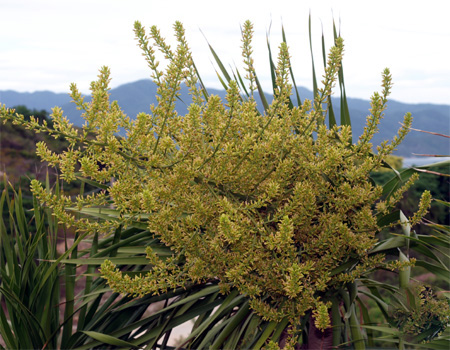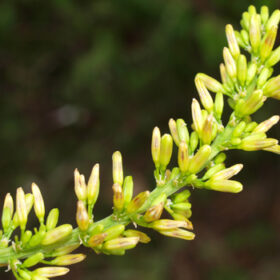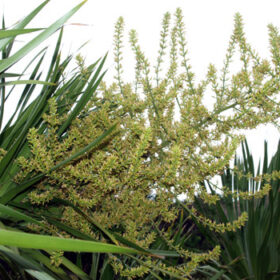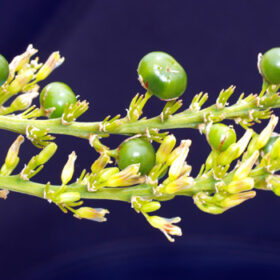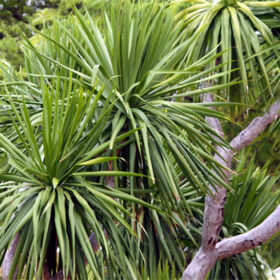Description:
Medium-sized plants reaching up to 3.5 meters in height, occasionally up to 10 meters, with a trunk diameter of 30 cm. The base of the stem is straight, some older stems become woody and hollow with a reddish-brown color. Branches have large, horizontal leaf scars. Leaves are closely arranged, narrow, and pointed, measuring 30-50 cm in length and 1.2-1.5 (-4) cm in width. Inflorescences are long, reaching up to 2 meters, with numerous long, slender branches. Flowers are yellow, 8 mm long, typically arranged in groups of 3-5 (-10) on small branches. Berries are round, with a diameter of 8-10 mm, turning red when ripe and containing 3 seeds. Flowering occurs from May to July.
Habitat and Ecology:
This species is distributed in South China (Guangxi), Vietnam, and Cambodia. In Vietnam, the plant grows on limestone mountains in mainland and islands from North to South, and is particularly abundant in Nui Chua National Park, Ninh Thuan province.
Uses:
The flowers are edible. The plant, often referred to as Huyết giác cam bốt (blood dragon cam bot), is used to treat injuries with blood clots, swelling, bruising, traumatic injuries, amenorrhea, lip numbness, back pain, bone pain, and for the treatment of solitary swellings, nodes, and boils. It is also used externally for splinting fractures. The plant can be used to make a tincture (alcohol-based extract) for internal consumption or external application. The wood is harvested in winter, the outer bark is removed, and the red core is collected, chopped, and dried. Huyết giác has a bitter and astringent taste, is neutral in nature, and possesses the properties of hemostasis (stopping bleeding), promoting blood circulation, promoting tissue regeneration, and promoting the flow of qi (vital energy).

